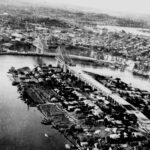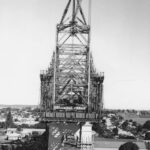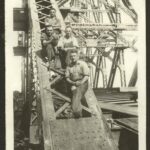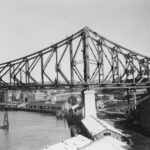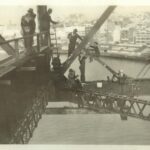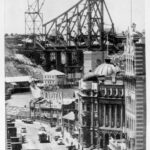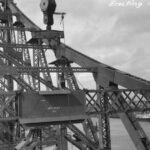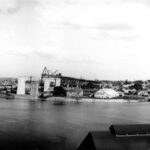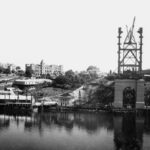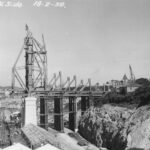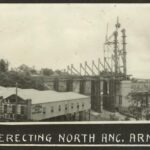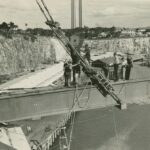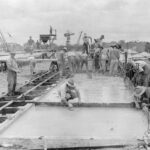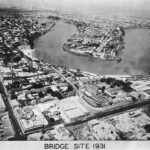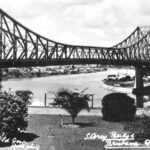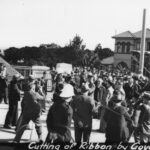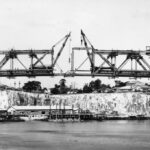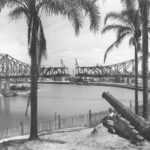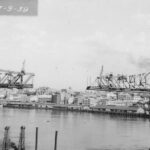News
The Story Bridge: Brisbane’s Monument to Ambition, Engineering and Endurance
As is the case with all infrastructure, age brings complexity, and Brisbane’s iconic Story Bridge is no exception to the challenges of time. With increasing maintenance needs, a fragmented ownership and control structure, and no long-term funding certainty, it is right that discussions are held about the best ways to increase the lifespan of an irreplaceable part of Brisbane’s skyline.
But as we look forward to what the future holds for a Brisbane icon, we thought it might be good to take a different approach and look at why the Story Bridge is Brisbane’s Monument to Ambition, Engineering and Endurance.
Story Bridge: Brisbane’s Monument to Ambition, Engineering and Endurance
For over eight decades, the Story Bridge has defined Brisbane’s skyline and underpinned its economic, cultural, and civic life. Linking Fortitude Valley and Kangaroo Point, it carries an astonishing 100,000 vehicles daily, along with approximately 4,000 pedestrians and cyclists each day prior to the closure of its footpaths in early 20251.
As all levels of government, users, and Brisbane residents debate what should be done with the bridge, it is important to appreciate its role today, and to do that, we must revisit its origins and look ahead to what might come next.
Born in the Depression: A City’s Lifeline
In the 1930s, Brisbane’s limited ferry network and small bridges restricted connectivity across the Brisbane River. Amid the economic hardship of the Great Depression, the Story Bridge emerged as a transformative project, stimulating local industry and creating thousands of jobs.
Led by Dr John Bradfield, renowned for his work on the Sydney Harbour Bridge, the project was designed to reflect both technical ambition and practical engineering tailored to Brisbane’s geography.
Building the Bridge: An Engineering Triumph
Construction commenced in 1935 and concluded in 1940 under the stewardship of Evans Deakin–Hornibrook, with manufacturing taking place at the company’s site in Salisbury before transportation to site. The cantilever design eliminated the need for central piers, allowing uninterrupted river traffic during construction. Key facts:
- Cost: £1.6 million—then Queensland’s most expensive infrastructure project 2.
- Adjusted for inflation the cost is approximately $55 million in 2025
- Steel: Over 12,000 tonnes, much of it fabricated locally.
- Method: Balanced cantilever technique from each riverbank.
- Safety: Four worker fatalities—tragic but low by the standards of the era.
The bridge officially opened on 6 July 1940, a beacon of resilience and recovery.
Check out the amazing images of the Story Bridge in construction thanks to the State Library of Queensland.
The Bridge Today: A Vital Artery Under Strain
As of 2025, the Story Bridge remains a critical part of Brisbane’s transport network:
- Vehicles: ~100,000 per day1.
- Pedestrians and Cyclists: About 1,800 cyclists and 3,400 pedestrians used the bridge daily in 20233, though both paths were closed in March 2025 due to safety concerns4.
The bridge also functions as a cultural and tourism landmark, emergency route, and symbol of Brisbane’s identity.
Ageing Infrastructure: Challenges and Costs
Now in the final third of its expected 100-year lifespan, the bridge faces significant wear:
- Steel fatigue and corrosion, worsened by Brisbane’s subtropical climate.
- Traffic stress far beyond what was anticipated in the 1930s.
- Aesthetic upkeep, especially with its heritage-listed status and lighting displays.
- Maintenance costs nearing $3 million annually5, with full rehabilitation costs potentially reaching $1 billion6.
Footpath closures and structural deterioration have heightened public debate over long-term management4.
What Could Replace the Story Bridge?
While full restoration remains a priority, several hypothetical alternatives could serve Brisbane’s future needs:
- Parallel Bridge – A new multi-modal bridge could be built beside the existing structure, alleviating pressure while offering improved pedestrian and cyclist infrastructure.
- Tunnel Alternative – A vehicular tunnel—akin to the Clem Jones Tunnel—could reduce congestion and preserve the Story Bridge for heritage or limited traffic purposes7.
- Active Transport-Only Bridge – A separate pedestrian/cycle bridge, following the success of the Neville Bonner Bridge, could restore river-crossing access for non-vehicle users8.
- Full Replacement – A modern interpretation of the Story Bridge’s design could be built from the ground up, designed to meet Brisbane’s evolving transport, safety, and sustainability standards—though the price tag could exceed $2 billion.
Each option would require serious planning, investment, and cross-agency coordination.
Supporting Brisbane’s Growth: A Bridge Beyond Transport
Beyond carrying traffic, the Story Bridge has unlocked riverside land, supported commercial development, and drawn global attention. Its contribution to Brisbane’s urban fabric is as much cultural and economic as it is practical.
Looking Ahead: A Symbol for the Next Century
The bridge’s endurance reflects the value of sound planning and bold infrastructure decisions. Whether Brisbane chooses to restore, replicate, or reinvent the Story Bridge, its legacy demands a response grounded in foresight, coordination, and community need.
The Story Bridge doesn’t just connect two sides of a river—it connects Brisbane’s past, present, and future.
Image Credits
Civil Project Partners would like to acknowledge and thank the State Library of Queensland for use of the images in this article.
Footnotes
- Brisbane City Council, Story Bridge maintenance update, 2025.
- Queensland Government, Queensland Heritage Register Entry – Story Bridge, 2020.
- Brisbane City Council, Active Travel Counts, 2023.
- ABC News, Story Bridge footpaths closed due to safety fears, March 2025.
- Brisbane Times, Maintenance bill for Story Bridge hits $3 million a year, 2023.
- Courier Mail, Repairing Story Bridge could cost up to $1 billion, April 2024.
- Department of Transport and Main Roads, Clem7 Tunnel – Traffic Reports, 2019.
- Cross River Rail Delivery Authority, Neville Bonner Bridge Usage Estimates, 2023.

